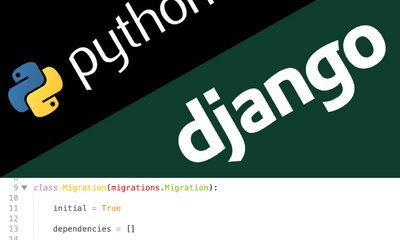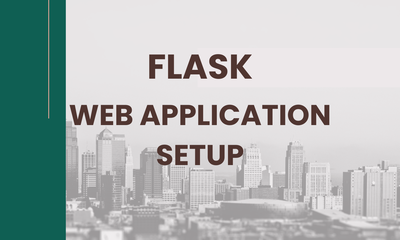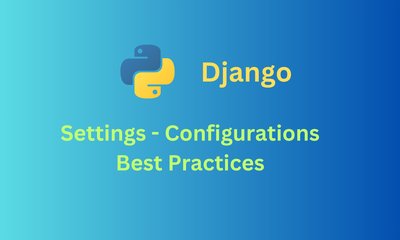Django マイグレーション:問題点、課題、解決策、およびベストプラクティス
By khoanc, at: 2023年5月11日10:34
Estimated Reading Time: __READING_TIME__ minutes


Djangoのマイグレーションシステムは、アプリケーションのデータベーススキーマの変更を時間とともに管理するための不可欠なツールです。しかし、他の複雑なシステムと同様に、マイグレーションを使用する際に開発者が遭遇する可能性のある問題や課題があります。この記事では、Djangoマイグレーションで最もよくある問題や課題、それらを克服するための解決策とベストプラクティスについて説明します。
問題/課題1:マイグレーション時間の長さ
Djangoマイグレーションの一般的な問題の1つは、マイグレーション時間の長さです。これは、大きなテーブル、複雑なデータマイグレーション、ハードウェアの遅さなど、いくつかの要因が原因である可能性があります。
解決策1:マイグレーションをより小さなチャンクに分割する
効果的な解決策の1つは、大きなマイグレーションをより小さく、より管理しやすいチャンクに分割することです。1つの巨大なマイグレーションファイルではなく、変更を順番に実行できる複数の小さなマイグレーションに分割します。これにより、個々のマイグレーションの実行速度が向上し、全体的なプロセスがより効率的になります。
メリット:
- マイグレーションが小さくなるため、実行速度が向上し、全体のマイグレーション時間が短縮されます。
- マイグレーション中に問題が発生した場合、トラブルシューティングとデバッグが容易になります。
デメリット:
- マイグレーションを分割すると、マイグレーション戦略に追加の複雑さが生じます。
- 正しい実行順序を確保するために、綿密な計画と調整が必要です。
解決策2:データベースクエリと操作を最適化する
場合によっては、マイグレーション時間の長さは、マイグレーションスクリプト内の非効率的またはリソース集約型のデータベースクエリまたは操作に起因する可能性があります。これらのクエリを分析して最適化することで、マイグレーションのパフォーマンスを大幅に向上させることができます。
考慮すべきいくつかのテクニックを次に示します。
- インデックスの最適化:関連するデータベース列に適切なインデックスを設定して、クエリの実行速度を向上させます。
- バッチ処理:バルクデータ操作を実行する場合は、バッチ処理テクニックを使用するか、Djangoの
bulk_create()およびupdate()メソッドを使用して、データベースのラウンドトリップ数を最小限に抑えます。
- データ操作の最小化:マイグレーション中の複雑なデータ操作を最小限に抑えます。可能であれば、データ操作を個別のデータマイグレーションに移動するか、マイグレーションプロセス以外で実行します。
メリット:
- クエリと操作を最適化することで、マイグレーション時間を大幅に短縮できます。
- マイグレーション中のデータベースのパフォーマンスと効率が向上します。
デメリット:
- データベースクエリと操作の綿密な分析と最適化が必要です。
- データベース最適化テクニックに関する追加の知識と理解が必要になる場合があります。
問題/課題2:データ損失
Djangoマイグレーションにおけるもう1つの一般的な課題は、スキーマの変更中にデータ損失が発生する可能性があることです。これは、フィールドまたはテーブルが削除または名前変更された場合に発生し、データの損失につながります。
解決策1:データマイグレーションを使用する
マイグレーション中にデータ損失を防ぐための1つの解決策は、データマイグレーションを使用することです。データマイグレーションを使用すると、Pythonコードを記述してデータベース内のデータをマイグレーションできます。これには、フィールドの更新、新しいデータの追加、必要に応じてデータの削除などが含まれます。
メリット:データマイグレーションにより、マイグレーション中に複雑なデータ操作を実行し、データ損失を防ぐことができます。
デメリット:データマイグレーションには、新しい問題が発生しないように追加の計画とテストが必要です。
解決策2:データのバックアップを作成する
データの変更を含むマイグレーションを実行する前に、データベースのバックアップを作成することが重要です。このバックアップは、マイグレーションプロセス中に何か問題が発生した場合のセーフティネットとして機能します。データ損失が発生した場合、バックアップを復元して失われたデータを回復できます。
メリット:
- データ損失の場合に信頼できるフォールバックオプションを提供します。
- マイグレーション前の状態にデータを迅速に復元できます。
デメリット:
- バックアップの作成と管理には、追加のストレージ容量とリソースが必要です。
- 特に大きなデータベースの場合、復元には時間がかかる可能性があります。
解決策3:データ検証チェックを実装する
潜在的なデータ損失から保護するために、マイグレーションスクリプト内にデータ検証チェックを実装します。データ変更操作を実行する前に、既存のデータが必須の制約を満たしていることを確認します。たとえば、特定のフィールドが空でないこと、またはリレーションシップが適切に維持されていることを確認できます。これらのチェックを実行することで、データ損失につながる可能性のある変更を加える前に、潜在的な問題を特定できます。
メリット:
- データ整合性の問題を早期に発見し、対処する機会を提供します。
- 既存データの一貫性を検証することで、データ損失を防ぎます。
デメリット:
- 検証ロジックの綿密な実装とテストが必要です。
- マイグレーションスクリプトに追加の複雑さが生じる可能性があります。
解決策4:マイグレーションを徹底的にテストする
本番環境に適用する前に、開発環境でマイグレーションを徹底的にテストすることが重要です。現実的なデータシナリオでマイグレーションプロセスをテストして、潜在的な問題やデータ損失のリスクを特定し、解決します。さまざまなマイグレーションシナリオを網羅した自動テストは、マイグレーションの正確さと安全性を確保するのに役立ちます。
メリット:
- 潜在的なデータ損失の問題を早期に発見するのに役立ちます。
- マイグレーションプロセスに対する信頼性を高めます。
デメリット:
- マイグレーションシナリオの綿密な計画と包括的なテストが必要です。
- 特に複雑なプロジェクトでは、時間がかかる可能性があります。
問題/課題3:複数の開発者との競合
複数の開発者でプロジェクトに取り組んでいる場合、マイグレーションの競合が発生する可能性があります。これは、複数の開発者が同じマイグレーションに取り組んでいる場合、またはスキーマに競合する変更を加えた場合に発生する可能性があります。
解決策1:バージョン管理を使用する
マイグレーションの競合を回避するには、マイグレーションにバージョン管理を使用することが不可欠です。これにより、各開発者は独自のブランチで作業し、必要に応じて変更をメインブランチにマージできます。
メリット:バージョン管理により、すべての開発者がコードベースの最新バージョンで作業しており、マイグレーションの競合を防ぐことができます。
デメリット:バージョン管理には追加の設定が必要であり、開発ワークフローに追加の複雑さが生じる可能性があります。
解決策2:コミュニケーションと協調
開発チーム間のオープンなコミュニケーションと協調を促進します。開発者が進行中のマイグレーション作業を認識していることを確認し、マイグレーション計画を調整し、競合を回避するための議論を促します。マイグレーションの進捗状況を定期的に同期し、提案された変更を共有して、予期せぬ事態や競合を最小限に抑えます。
メリット:
- 協調的でまとまりのあるチーム環境を促進します。
- 潜在的な競合を早期に特定し、解決できます。
デメリット:
- チームメンバー間の効果的なコミュニケーションと調整が必要です。
- 頻繁に変更や意見の相違がある場合は、遅延が発生する可能性があります。
解決策3:フィーチャブランチを使用する
マイグレーション関連の変更を行う際に、各開発者が独自のフィーチャブランチで作業するブランチ戦略を実装します。このアプローチにより、開発者は他の開発者に直接影響を与えることなく、マイグレーションを独立して作業できます。機能が完了したら、ブランチをマージし、競合を解決できます。
メリット:
- 各開発者のマイグレーション作業を分離します。
- マイグレーション開発中の競合のリスクを軽減します。
デメリット:
- 適切なブランチ戦略とマージ戦略が必要です。
- ブランチのマージ中に解決する必要がある競合が発生する可能性があります。
解決策4:自動テストと継続的インテグレーション(CI)
自動テストを実装し、CIシステムを開発ワークフローに組み込みます。各開発者のマイグレーションの変更をテストし、CI環境で統合することで、競合やエラーを早期に発見し、マイグレーションが意図したとおりに機能し、競合が発生しないようにすることができます。
メリット:
- 競合とエラーを早期に検出できます。
- 自動テストを通じてマイグレーションの整合性を維持します。
デメリット:
- CI環境の設定と維持が必要です。
- テストの実行に時間がかかる場合は、遅延が発生する可能性があります。
問題/課題4:下位互換性
下位互換性は、Djangoマイグレーションを使用する際に考慮すべき重要な問題です。これは、マイグレーションが、古いバージョンのコードベースに適用された場合、または以前のバージョンにロールバックされた場合に、正しくシームレスに機能する能力を指します。これにより、マイグレーションを適用または元に戻しても、データの不整合やエラーが発生しません。Djangoマイグレーションにおける下位互換性を解決するためのいくつかの解決策を次に示します。
解決策1:フィールドまたはモデルを削除しない
スキーマの変更を行う際には、以前のマイグレーションまたは既存のコードによってまだ使用されているフィールドまたはモデルを削除しないことが重要です。代わりに、段階的に非推奨にし、下位互換性のある代替手段を提供することを検討します。これにより、古いコードバージョンと新しいコードバージョンの両方でマイグレーションをスムーズに適用できます。
メリット:
- 古いコードバージョンとマイグレーションとの互換性を維持します。
- フィールドまたはモデルがないことによって発生するデータ損失やエラーを回避します。
デメリット:
- 下位互換性のある代替手段を導入するには、計画と調整が必要です。
- 非推奨のコードの管理が複雑になる可能性があります。
解決策2:データ復元
最近のバックアップがあれば、データのコピーを既知の良好な状態で保持できます。マイグレーションによって互換性の問題やデータ損失が発生した場合、バックアップからデータベースを復元して、変更を効果的に元に戻し、下位互換性を維持できます。
メリット:
- マイグレーションの問題が発生した場合に、信頼できるフォールバックオプションを提供します。
- 既知の良好な状態にデータベースを迅速に復元できます。
デメリット:
- バックアップの作成と管理には、追加のストレージ容量とリソースが必要です。
- 特に大きなデータベースの場合、復元には時間がかかる可能性があります。
データベースバックアップを効果的に実装するには、次の点を考慮してください。
- 定期的なバックアップスケジュール:データベースの最新のコピーを確保するために、定期的なバックアップスケジュールを設定します。バックアップの頻度は、データの変更率とアプリケーションの重要度によって異なります。
- 安全なバックアップストレージ:本番環境とは別に、安全な場所にバックアップを保存します。これにより、大規模な障害やデータ侵害が発生した場合でも、データの安全なコピーが確保されます。
- バックアップのテスト:テスト環境またはステージング環境でバックアップを復元することで、復元プロセスを定期的にテストします。これにより、バックアップファイルの整合性が検証され、必要に応じてデータベースを正常に復元できるようになります。
データベースを定期的にバックアップし、バックアップ管理のベストプラクティスに従うことで、Djangoマイグレーション中の下位互換性の問題に関連するリスクを軽減できます。最新で信頼性の高いバックアップを維持することは、データ管理の重要な側面であり、潜在的なデータ損失やマイグレーションの課題から保護するのに役立つことを覚えておいてください。
解決策3:徹底的なテストとステージング環境
下位互換性を確保するには、本番環境に非常に似たステージング環境または開発環境でマイグレーションを徹底的にテストすることが重要です。さまざまなコードバージョンとマイグレーションシナリオでテストすることで、互換性の問題を早期に特定し、必要な調整を行い、スムーズなマイグレーションプロセスを確保できます。
メリット:
- 本番環境でマイグレーションを適用する前に、互換性の問題を特定します。
- マイグレーションの安定性と下位互換性に対する信頼性を高めます。
デメリット:
- 専用のテストリソースと環境が必要です。
- 展開プロセスに遅延が発生する可能性があります。
これらの解決策を実装することで、Djangoマイグレーションにおける下位互換性の課題に対処できます。マイグレーションをコードベースのさまざまなバージョンでシームレスに適用またはロールバックできるようにすることで、安定性を促進し、データの不整合を最小限に抑え、よりスムーズな開発と展開プロセスを促進します。
Djangoマイグレーションのベストプラクティス、ヒント、テクニック
- 本番環境に展開する前に、常に開発環境でマイグレーションを徹底的にテストしてください。
- 1つのマイグレーションで大きなスキーマ変更を行わないでください。代わりに、変更をより小さく、より管理しやすいマイグレーションに分割してください。
- データマイグレーションを使用して、マイグレーション中のデータ変更を管理します。
- 複数の開発者の環境でマイグレーションの競合を管理するために、バージョン管理を使用します。
- Djangoの組み込みツールを使用して、パフォーマンスのためにデータベーススキーマを分析および最適化します。
- django-southまたはAlembicなどのサードパーティのマイグレーションツールを使用して、Djangoのマイグレーション機能を拡張します。
結論として、Djangoマイグレーションは、アプリケーションのデータベーススキーマの変更を管理するための強力なツールです。マイグレーション中に発生する可能性のある問題と課題を理解し、ベストプラクティスとヒントに従うことで、マイグレーションが時間とともに信頼性が高く、一貫性があり、効率的であることを保証できます。





